
Monumento a Floriano Peixoto: A Tribute to Brazil's Second President
Discover the Monumento a Floriano Peixoto in Rio de Janeiro, a stunning sculpture honoring Brazil's second president amidst the city's vibrant culture.
Nestled in the heart of Rio de Janeiro, the Monumento a Floriano Peixoto stands as a significant tribute to Brazil's second president. This magnificent sculpture, situated in the vibrant Centro district, offers tourists a glimpse into the country's rich history and stunning artistry. Surrounded by the bustling life of the city, this monument is not only a historical landmark but also a peaceful spot to reflect and appreciate Brazilian culture.
A brief summary to Monumento a Floriano Peixoto
- Rio de Janeiro, Centro, State of Rio de Janeiro, 20030-015, BR
Local tips
- Visit early in the morning to avoid crowds and enjoy a peaceful atmosphere.
- Take advantage of the free entry to explore the gardens surrounding the monument.
- Combine your visit with nearby attractions such as the Theatro Municipal and the National Museum of Fine Arts.
- Be sure to take a guided tour to learn more about the history of the monument and its significance.
Getting There
-
Car
From the main entrance of Serra dos Órgãos National Park, drive towards the town of Teresópolis. Once in Teresópolis, follow the signs to BR-116 and merge onto it heading towards Rio de Janeiro. Continue on BR-116 for approximately 45 kilometers until you reach the city of Rio de Janeiro. Take the exit for Centro, and follow the local roads to reach Monumento a Floriano Peixoto, located in the Centro neighborhood at the address Centro, Rio de Janeiro - State of Rio de Janeiro, 20030-015. Parking may be available in nearby lots, but expect to pay a fee.
-
Public Transportation
From Serra dos Órgãos National Park, take a bus from Teresópolis to Rio de Janeiro. Buses leave frequently from the Teresópolis bus terminal. Once you arrive at the Novo Rio Bus Station in Rio de Janeiro, you can take the Metro Line 2 towards Botafogo and get off at the Cinelândia station. From there, it’s a short walk to Monumento a Floriano Peixoto, located in the Centro neighborhood. Ensure to check the bus schedules for the exact departure times. The bus fare is approximately R$ 20, and the Metro fare is about R$ 4.
Discover more about Monumento a Floriano Peixoto
Iconic landmarks you can’t miss
Câmara Municipal do Rio de Janeiro
0.1 km
Discover the grandeur of Câmara Municipal do Rio de Janeiro, a historic building in the vibrant Praça Floriano, reflecting the city's rich cultural heritage.

Brazilian Academy of Letters
0.3 km
Explore the Brazilian Academy of Letters in Rio de Janeiro, where literary history and cultural heritage come alive in a stunning architectural setting.

Free Walker Tours
0.4 km
Discover Rio de Janeiro's rich culture and history on foot with Free Walker Tours, led by expert guides through the city's vibrant streets.

Av. Rio Branco
0.5 km
Discover the cultural heart of Rio de Janeiro along Av. Rio Branco, where history meets modern vibrancy in a bustling urban landscape.

Lampadário da Lapa
0.5 km
Discover the enchanting Lampadário da Lapa, a historical landmark in Rio de Janeiro, where art, culture, and nightlife converge in stunning urban beauty.

IHGRJ - Historical and Geographical Institute of Rio de Janeiro
0.5 km
Explore the Historical and Geographical Institute of Rio de Janeiro, where history unfolds through intriguing exhibits in the heart of Glória.

Circo Voador
0.5 km
Discover the heart of Rio de Janeiro's nightlife at Circo Voador, where music, art, and culture collide in an unforgettable experience.

Lapa Irish Pub
0.6 km
Experience the vibrant culture of Lapa at Lapa Irish Pub, where authentic Irish hospitality meets the lively spirit of Rio de Janeiro.

Boate Boas intenções - Lapa
0.6 km
Discover the nightlife of Rio de Janeiro at Boate Boas Intenções in Lapa, where vibrant music meets an electrifying atmosphere for unforgettable nights.

Arco iris da lapa
0.6 km
Discover the lively spirit of Rio de Janeiro at Arco Iris da Lapa, where vibrant nightlife meets delicious buffet dining in the heart of Lapa.

Tiradentes Palace
0.7 km
Explore the architectural splendor of Tiradentes Palace, a historic gem in the heart of Rio de Janeiro, reflecting Brazil's rich cultural and political heritage.
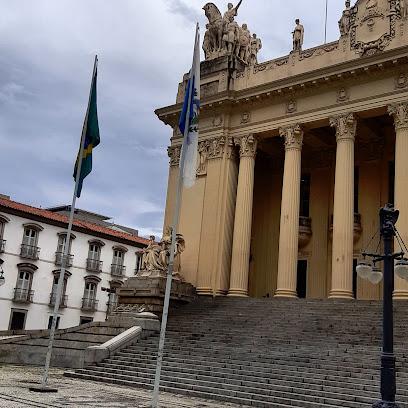
Monumento Nacional aos Mortos da Segunda Guerra Mundial
0.8 km
Explore the Monumento Nacional aos Mortos da Segunda Guerra Mundial, a striking memorial in Rio de Janeiro honoring Brazilian soldiers from World War II.

Statue General Osorio
0.8 km
Discover the Statue General Osorio, a historical gem in Rio de Janeiro, reflecting the city’s rich heritage and vibrant culture amid scenic surroundings.

Venerável Confraria Nossa Senhora da Lampadosa
0.8 km
Discover the serene beauty and rich heritage of Venerável Confraria Nossa Senhora da Lampadosa in Rio de Janeiro's vibrant Centro district.

Museu Histórico Nacional
0.8 km
Explore the captivating history of Brazil at Museu Histórico Nacional, a treasure trove of artifacts and exhibits in Rio de Janeiro's heart.

Unmissable attractions to see
Rio By Foot
0.1 km
Explore the beauty and culture of Rio de Janeiro through immersive walking tours with Rio By Foot, led by passionate local guides.

Fundação Biblioteca Nacional
0.1 km
Discover the National Library of Brazil, a cultural treasure in Rio de Janeiro, showcasing millions of books and stunning neoclassical architecture.
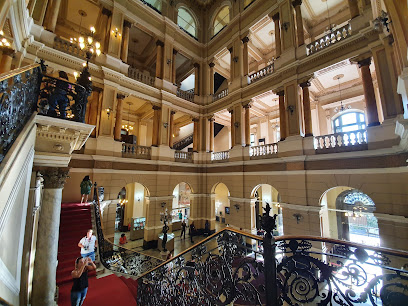
Praça Floriano
0.1 km
Experience the vibrant atmosphere of Praça Floriano, a cultural hub in Centro, Rio de Janeiro, where history and local life come alive.

Federal Justice Cultural Center
0.1 km
Discover the vibrant art and culture of Brazil at the Federal Justice Cultural Center in the heart of Rio de Janeiro.
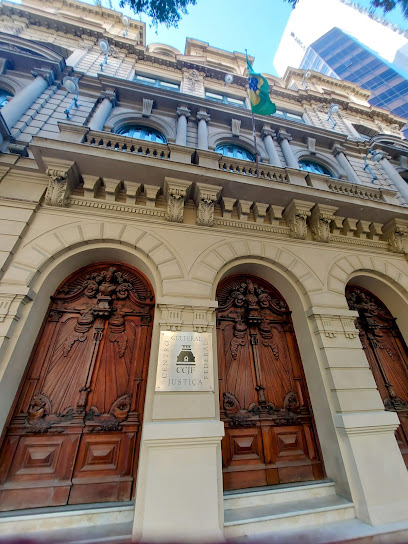
Municipal Theater of Rio de Janeiro
0.1 km
Discover the grandeur of the Municipal Theater of Rio de Janeiro, a cultural landmark blending exquisite architecture with world-class performances.

Jewish Museum
0.1 km
Explore the vibrant history and cultural contributions of the Jewish community in Brazil at the Jewish Museum in Rio de Janeiro.

Museu Nacional de Belas Artes
0.1 km
Explore the vibrant artistic heritage of Brazil at the Museu Nacional de Belas Artes, a premier cultural destination in Rio de Janeiro.

Centro Cultural Luiz Severiano Ribeiro
0.2 km
Experience the magic of cinema at the Centro Cultural Luiz Severiano Ribeiro, a historic theater in the heart of Rio de Janeiro offering diverse films and events.

Gandhi statue
0.2 km
Explore the Gandhi Statue in Rio de Janeiro, a serene monument dedicated to peace in the vibrant Centro district, perfect for reflection and photography.
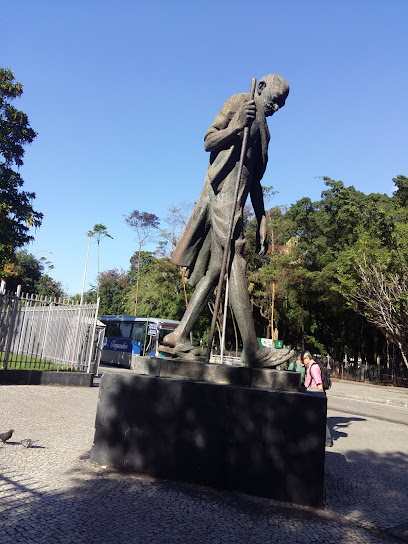
Praça Mahatma Gandhi
0.2 km
Discover tranquility at Praça Mahatma Gandhi, a peaceful park in Rio's vibrant Centro district, perfect for relaxation and exploration.
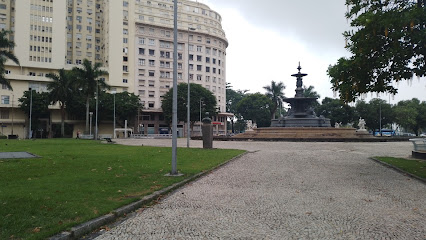
Station of Santa Teresa trams
0.3 km
Experience the charm of Rio de Janeiro at the Santa Teresa Tram Station, where history and culture converge in a scenic tram ride.

Chafariz do Monroe
0.3 km
Discover the charm of Chafariz do Monroe, a historical fountain in Rio de Janeiro that beautifully blends the city's rich heritage with vibrant urban life.

Palace building Gustavo Capanema
0.3 km
Experience the architectural brilliance and cultural significance of the Palace building Gustavo Capanema in the heart of Rio de Janeiro.

Gandhi Square
0.3 km
Explore the vibrant charm of Gandhi Square in Rio de Janeiro, a cultural hub where history, art, and community converge.

Church Santa Luzia
0.4 km
Discover the serene beauty and rich history of the Church of Santa Luzia, a captivating Catholic church in the heart of Rio de Janeiro.

Essential places to dine
Bistrô Villarino
0.2 km
Experience exceptional cuisine at Bistrô Villarino in Rio's Centro – where tradition meets modern gastronomy in an elegant setting.

Razzi Restaurante
0.2 km
Discover the authentic taste of Brazil at Razzi Restaurante in Rio de Janeiro's vibrant Centro district.

Demi-Glace
0.3 km
Experience authentic Brazilian cuisine at Demi-Glace, a premier restaurant in Rio de Janeiro's vibrant Centro district.
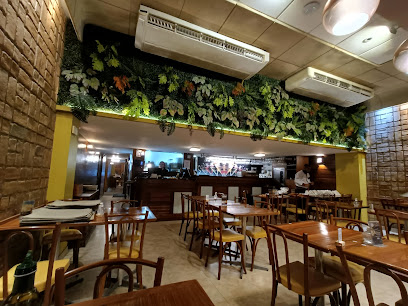
Restaurante Casa Urich
0.5 km
Discover Restaurante Casa Urich: A Culinary Journey Through Authentic German Flavors in the Heart of Rio de Janeiro.

Bar Ernesto
0.6 km
Discover Bar Ernesto: A vibrant German bar in Lapa offering authentic cuisine and local brews amidst Rio de Janeiro's energetic nightlife.

Giuseppe Italiano
0.6 km
Discover authentic Italian flavors at Giuseppe Italiano in Rio de Janeiro's vibrant Centro district – an unforgettable dining experience awaits.

Art à la Cart
0.6 km
Discover Art à la Cart: A delightful restaurant in Rio de Janeiro offering authentic Brazilian cuisine with an artistic twist.

restaurante Cortiço Carioca
0.6 km
Discover authentic Brazilian cuisine in Lapa at Restaurante Cortiço Carioca - where every dish tells a story.

Adega Flor de Coimbra
0.6 km
Discover the essence of Portuguese cuisine at Adega Flor de Coimbra in Rio's lively Lapa district – where tradition meets flavor.

Os Ximenes
0.6 km
Experience vibrant Brazilian cuisine and nightlife at Os Ximenes in Lapa, where every meal is a celebration of flavors.

Restaurante Bar Brasil
0.7 km
Discover the taste of Germany in Rio de Janeiro at Restaurante Bar Brasil - where traditional cuisine meets vibrant culture.

Nice Brazil Restaurant
0.7 km
Experience authentic Brazilian flavors at Nice Brazil Restaurant in Rio de Janeiro's vibrant Centro district.

Hachiko
0.7 km
Discover authentic Japanese flavors at Hachiko - Rio's premier destination for exquisite sushi and traditional cuisine.
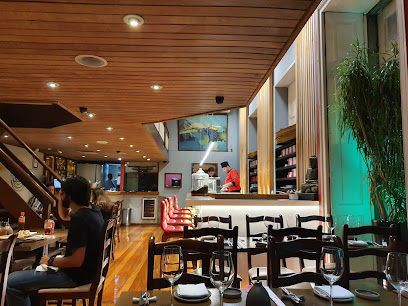
Bar Victor
0.7 km
Discover Bar Victor in Lapa: A culinary haven offering gourmet hamburgers and delectable tapas amidst Rio's vibrant nightlife.

Nova Capela Restaurant & Bar
0.7 km
Experience authentic Brazilian and Portuguese cuisine at Nova Capela Restaurant & Bar in Lapa, Rio de Janeiro - a culinary gem brimming with flavor.

Markets, malls and hidden boutiques
BRAZUCA STORE
0.2 km
Experience the vibrant spirit of Rio de Janeiro through unique T-shirts at the Brazuca Store, your go-to destination for authentic Brazilian souvenirs.

Raça Rubro-Negra
0.2 km
Discover the vibrant sportswear culture at Raça Rubro-Negra, where style meets passion in the heart of Rio de Janeiro.

Melhor das Casas
0.3 km
Explore Melhor das Casas, a vibrant craft store in Rio de Janeiro, where creativity meets culture and every item tells a story.

Cose - Moda Elegante Feminina
0.3 km
Discover elegance at Cose - Moda Elegante Feminina, Rio de Janeiro's premier destination for women's formal wear.

Gift
0.4 km
Explore a delightful gift shop in Rio's Centro, offering unique souvenirs and authentic Brazilian crafts that capture the spirit of your travels.

RV Store (RJ)
0.4 km
Discover top-notch computer and cell phone accessories at RV Store in Rio de Janeiro, where innovation meets convenience in the heart of the city.

Loja Info Place
0.4 km
Explore Loja Info Place in Rio de Janeiro for high-quality photography services and unique souvenirs to capture your travel memories.

MD Too
0.4 km
Discover unique fashion trends at MD Too, a premier clothing store in Rio de Janeiro's vibrant Centro district.

Herisson.Artes
0.5 km
Discover the art of self-expression at Herisson.Artes, Rio de Janeiro's premier custom t-shirt store for creative souvenirs.

BAGGIO
0.5 km
Explore the vibrant fashion scene of Rio de Janeiro at BAGGIO, a designer clothing store in the historic Lapa district, where style meets culture.

Dufry Shopping
0.6 km
Explore Dufry Shopping in Rio de Janeiro for an eclectic mix of perfumes, chocolates, clothing, and more, capturing the essence of Brazilian retail therapy.

Jumps
0.6 km
Discover unique women's fashion at Jumps, a trendy clothing store in the heart of Rio de Janeiro's vibrant Centro district.

Aviator
0.6 km
Discover stylish men's clothing at Aviator in the heart of Rio de Janeiro, blending quality with contemporary fashion for every occasion.

Cristalit II
0.6 km
Explore Cristalit II in Rio's Lapa district for exquisite mirrors and picture frames that capture the essence of Brazilian craftsmanship.

Loja Pence
0.6 km
Discover the essence of Brazilian fashion at Loja Pence, a chic clothing store in Rio de Janeiro's vibrant Centro district.

Essential bars & hidden hideouts
Booze Bar Lapa
0.6 km
Experience the vibrant culinary delights of Booze Bar Lapa, where gourmet burgers and craft beers meet a lively atmosphere in Rio de Janeiro.

Improviso Lounge Bar
0.7 km
Discover the lively Improviso Lounge Bar in Lapa, Rio de Janeiro, where creative cocktails and live music create an unforgettable nightlife experience.

Pub Kriok
0.7 km
Discover the vibrant nightlife at Pub Kriok, a premier bar and disco club in Lapa, Rio de Janeiro, where music and fun collide.

Antonio's Bar
0.7 km
Experience the vibrant Brazilian nightlife at Antonio's Bar in Lapa, where delicious food and lively atmosphere come together.

Bohemian Lapa Cavern Pub
0.7 km
Discover the lively spirit of Rio's nightlife at the Bohemian Lapa Cavern Pub, where music, drinks, and vibrant culture collide.
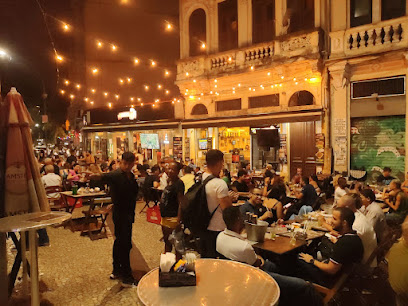
Bar da Cachaça Original
0.8 km
Dive into the heart of Rio's nightlife at Bar da Cachaça Original, where vibrant music, authentic drinks, and local flavors await.

Boteco Carioquinha
0.8 km
Experience the essence of Rio de Janeiro's nightlife at Boteco Carioquinha, where vibrant culture and delicious drinks meet in perfect harmony.
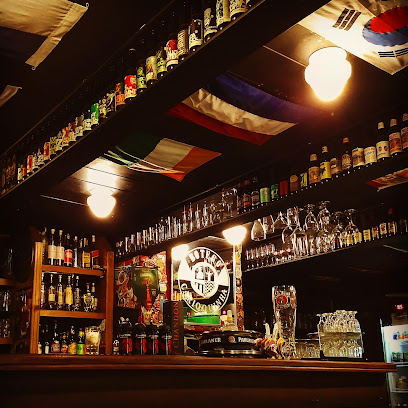
Rio Scenarium
0.9 km
Discover Rio Scenarium - a vibrant bar and live music venue in Rio de Janeiro, where eclectic decor meets the rhythm of samba and delicious cuisine.

Bar do Serginho
1.0 km
Discover the essence of Brazilian nightlife at Bar do Serginho, where vibrant culture meets delicious flavors in the heart of Santa Teresa.

Explorer Bar
1.6 km
Explore the vibrant cocktail culture of Santa Teresa at Explorer Bar, where creative drinks and lively ambiance come together for an unforgettable night.

Casa Nossa Lounge
1.6 km
Experience the vibrant culture of Rio at Casa Nossa Lounge, a lively bar and restaurant nestled in the charming Santa Teresa neighborhood.

Bar Simplesmente
1.6 km
Discover the vibrant cocktails and lively atmosphere of Bar Simplesmente, a charming bar in Santa Teresa, Rio de Janeiro, perfect for a night out.

Bar dos Descasados
1.8 km
Immerse yourself in the vibrant atmosphere of Bar dos Descasados, a cultural gem in Santa Teresa, Rio de Janeiro, where art and nightlife come alive.

Bar da Fatinha
1.8 km
Experience the vibrant local culture at Bar da Fatinha in Santa Teresa, a cozy bar offering authentic drinks and a lively atmosphere.

Bar Armazém São Thiago - Santa Teresa
1.9 km
Experience the vibrant nightlife at Bar Armazém São Thiago in Santa Teresa, where delicious cocktails and local culture come together.




